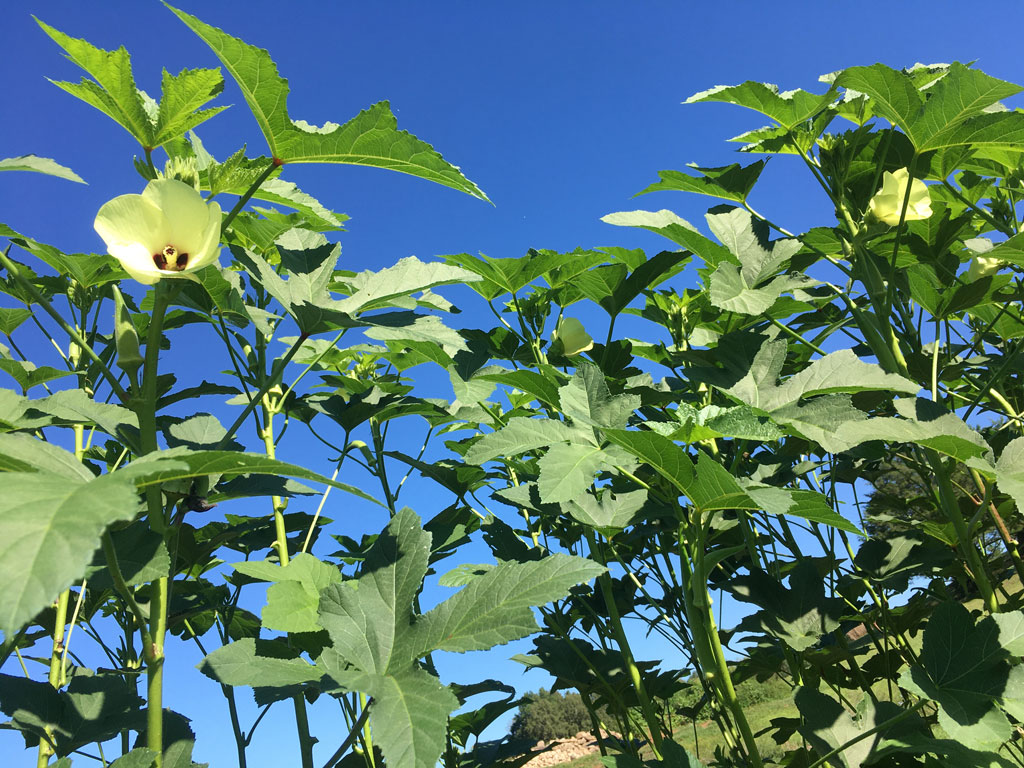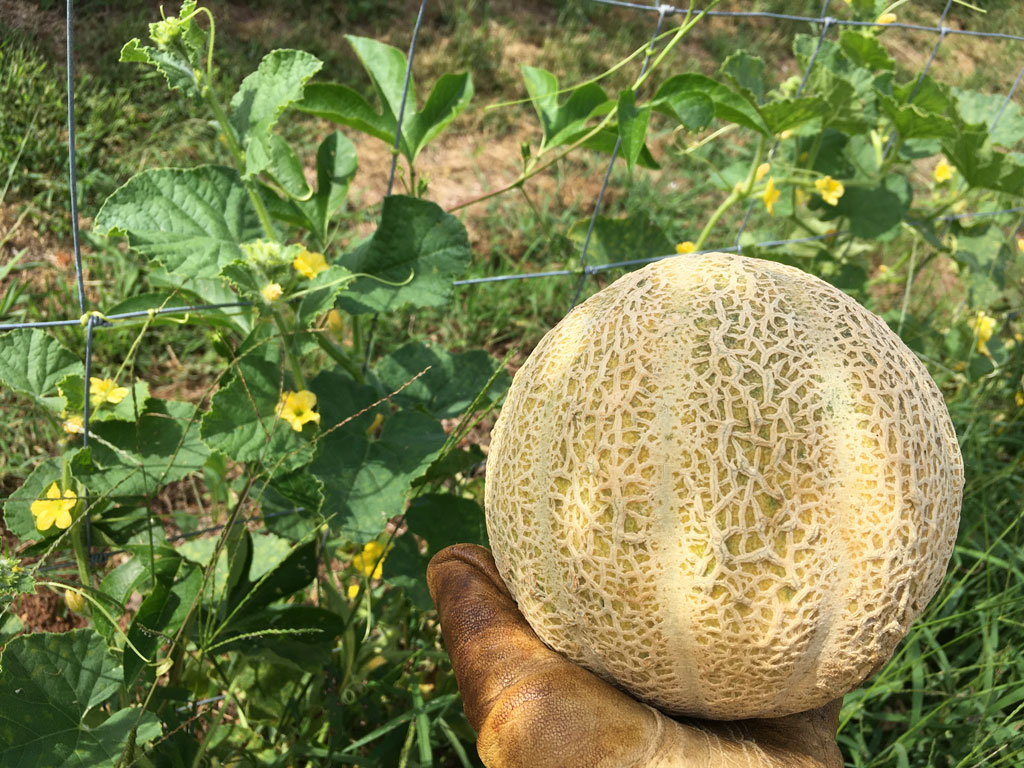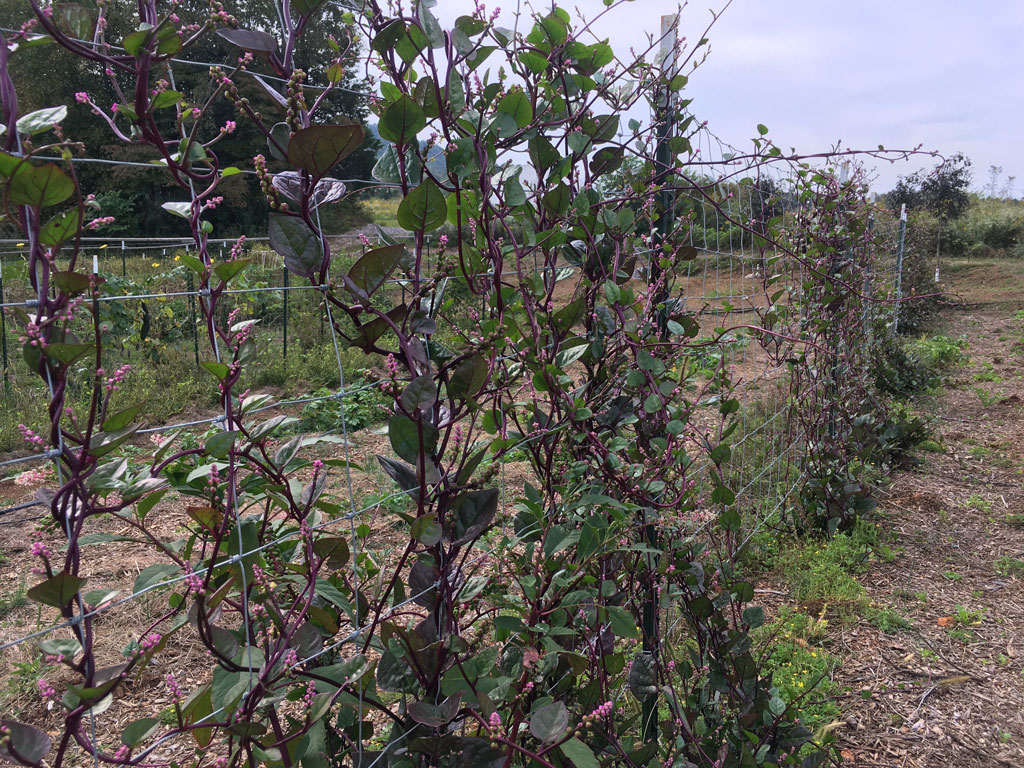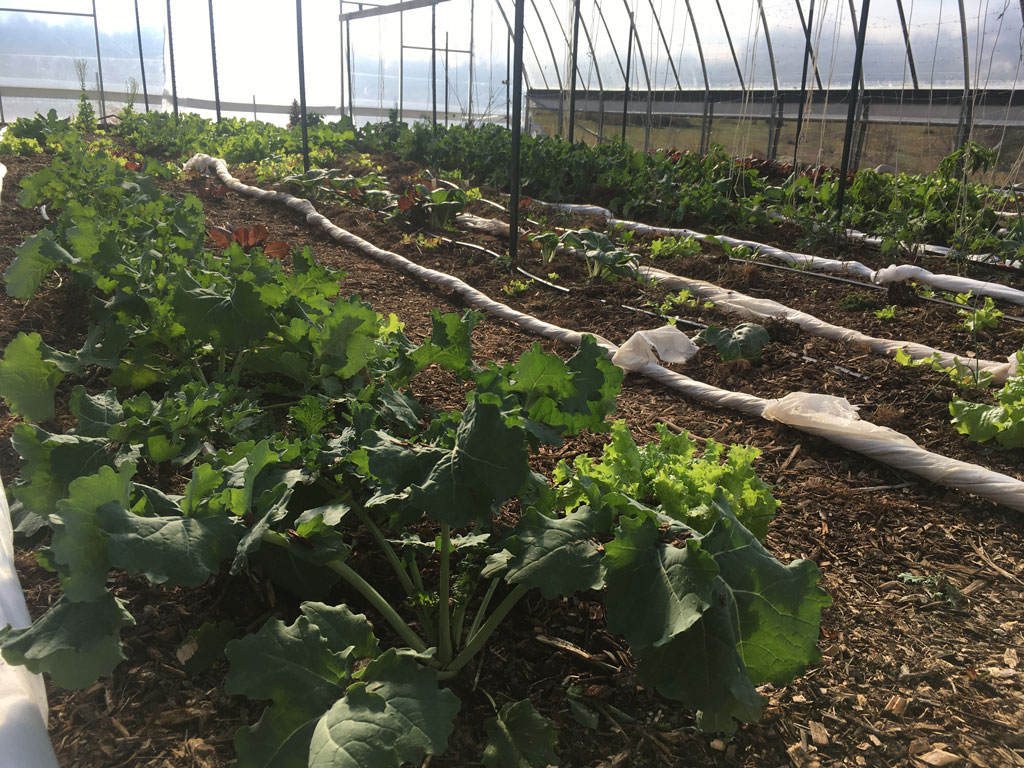| Scientific Name | Luffa aegyptiaca |
| Growing Days | 150-200 to get a fully dried luffa sponge…that’s a long time! |
| Varieties We Grow | There’s just luffa… |
| Growing Notes | Luffa plants produce the prettiest, long-living yellow flowers well into late summer. The native bees love them! Even if we didn’t harvest luffas, it would be worth it to grow just to keep the bees happy. |
| Battle of the Bugs | So far, the luffa plants haven’t had much trouble with bugs…hopefully it will stay that way 🙂 |
| Fun Fact | Which is it…”loofah,” “loofa,” or “luffa”? Who knows! They all seem right, though the luffa plant’s scientific name spelling is “luffa” so that’s what we stick with. |
| Don’t Waste It! | The young luffa fruits are actually edible (up to about 6″ long) (peel them then treat them like zucchini). It’s way more fun to let them dry, peel them, remove the seeds, and use them as luffa sponges. |









